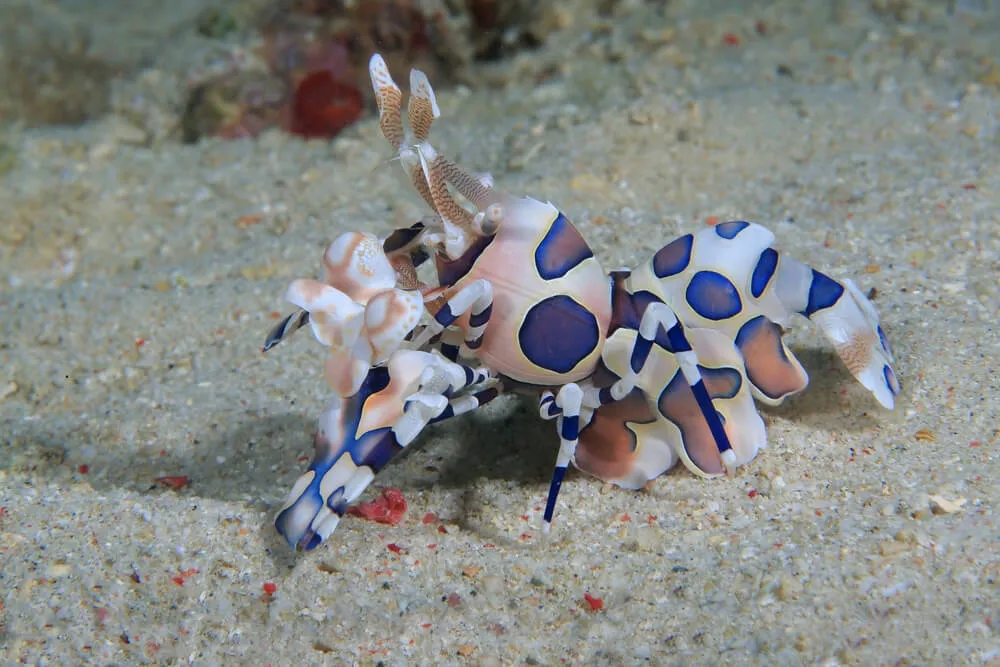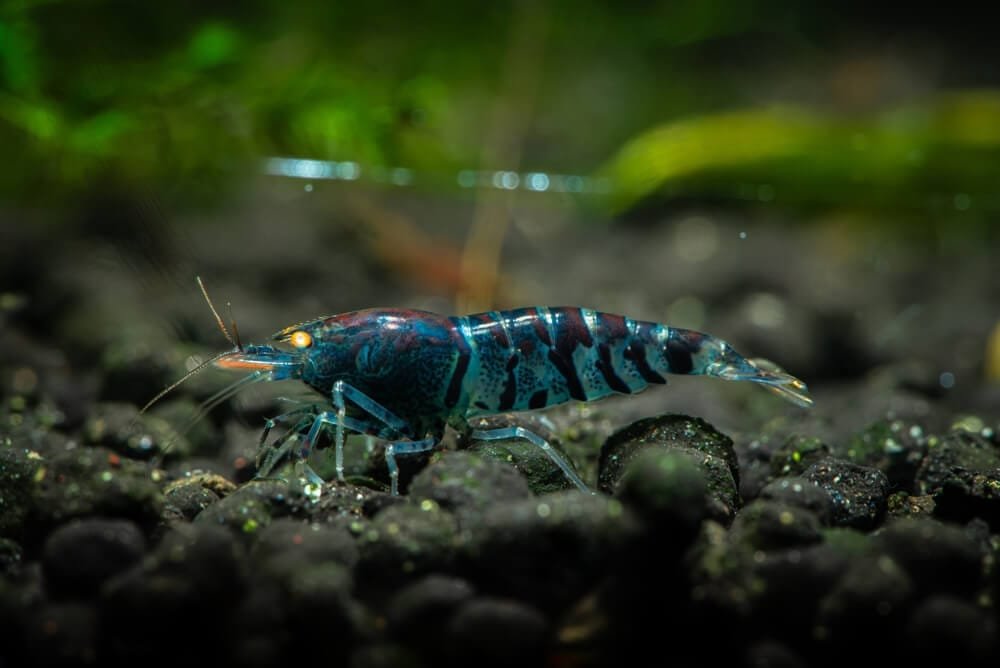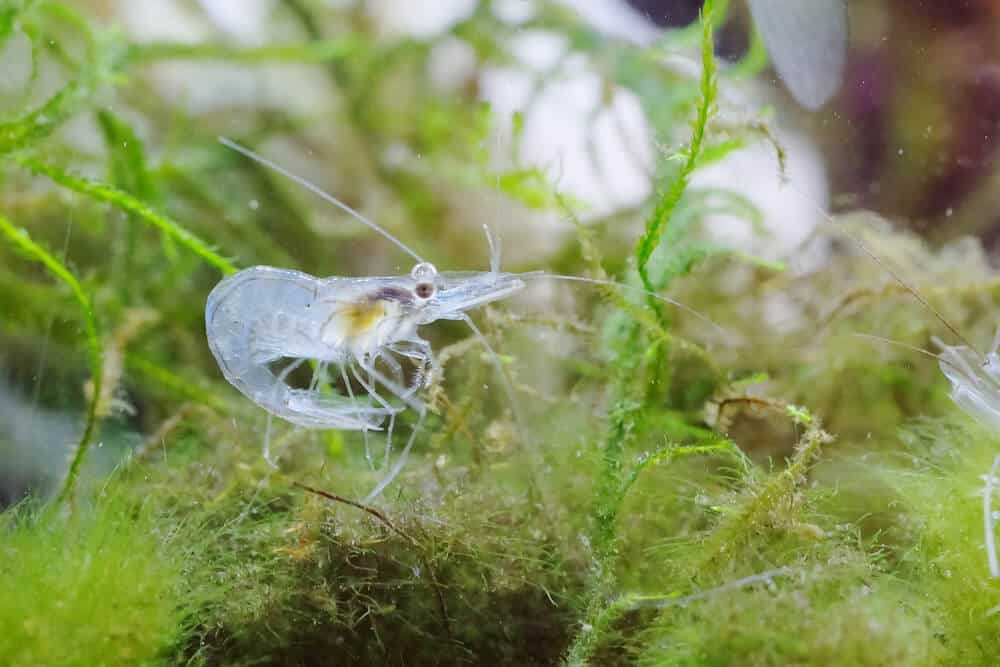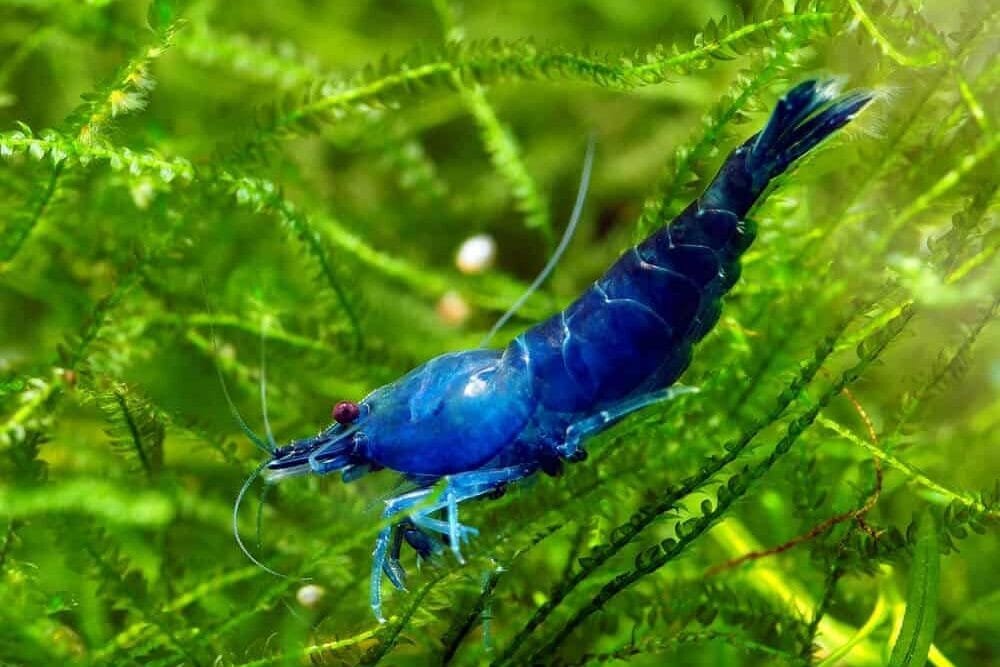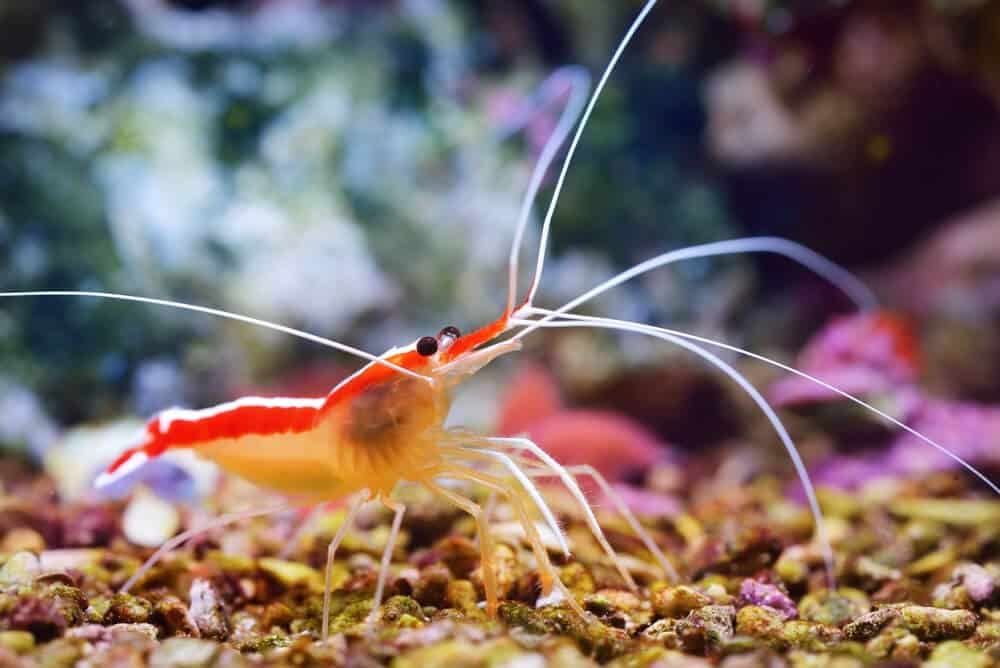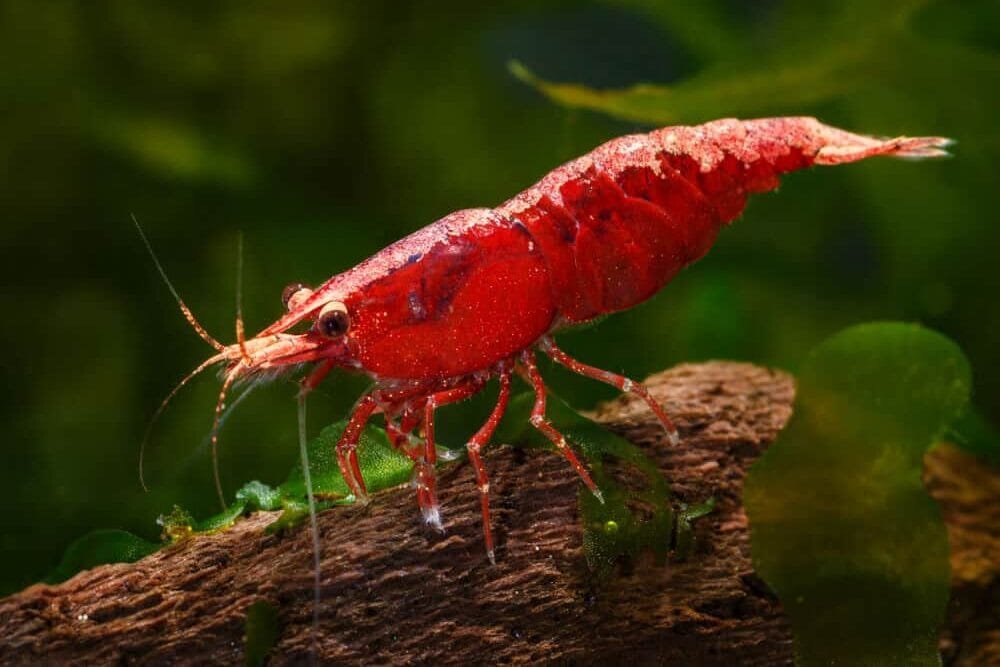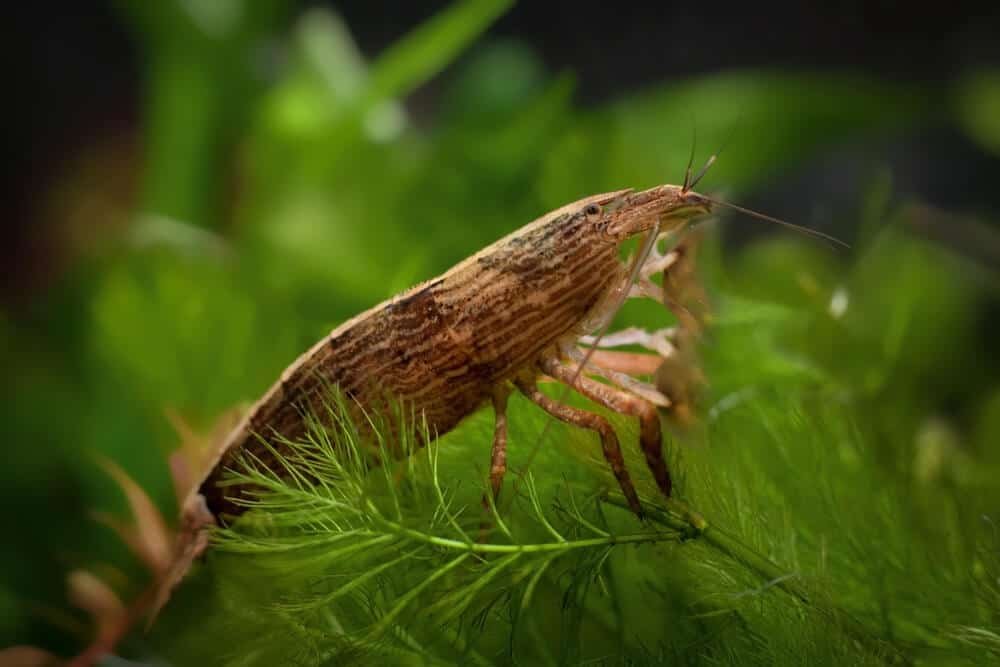Coral Banded Shrimp: Behavior, Feeding and Tank Needs
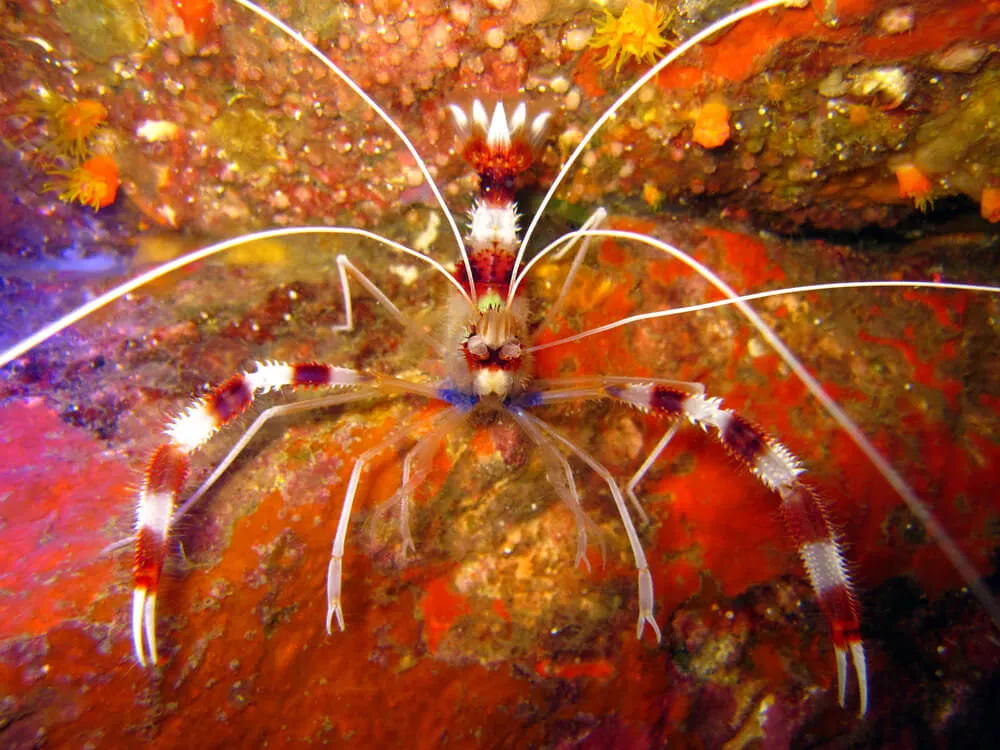
If you’re seeking a unique addition to your saltwater aquarium, look no further than the mesmerizing Coral Banded Shrimp. This fascinating creature, known scientifically as Stenopus hispidus, boasts eye-catching red and white bands that adorn its sleek body. With their charming personalities and intriguing behavior, Coral Banded Shrimp have captivated fishkeepers around the world. Whether you’re a seasoned marine enthusiast or just starting out, these delightful crustaceans are sure to bring a vibrant touch to your underwater oasis.
Physical Description
Size
The Coral Banded Shrimp is a relatively small crustacean, typically growing to around 2-3 inches in length. While the males tend to be slightly smaller than the females, both sexes exhibit the same striking appearance that makes them highly sought after in the aquarium trade.
Coloration
Known for their vibrant coloration, Coral Banded Shrimp display a predominantly red body with distinct white bands that run horizontally across their carapace. These bands stand out against the deep red backdrop, creating a visually striking pattern that catches the eye.
Body Structure
The body structure of the Coral Banded Shrimp is characterized by a relatively large carapace, which covers their cephalothorax and attaches to their abdomen. They have long and slender antennae that aid in their sensory perception and movement. Their front pair of appendages, known as claws or chelae, are larger and more robust than their other legs and are used for capturing prey and territorial defense.
Habitat
Natural Habitat
Coral Banded Shrimp are found in the tropical waters of the Indo-Pacific region, including the Red Sea, the Maldives, and the Great Barrier Reef. They inhabit reef slopes and lagoons, where they seek shelter in crevices and caves, often near coral formations.
Aquarium Environment
When recreating the Coral Banded Shrimp’s natural habitat in an aquarium, it is essential to provide ample hiding spots and caves. Live rock structures with crevices and small caves mimic their preferred shelter options. It is also important to maintain stable water quality, appropriate temperature, and salinity levels to ensure their well-being.
Behavior
Symbiotic Relationships
Coral Banded Shrimp have been observed engaging in mutualistic symbiotic relationships with various organisms. They often establish cleaning stations on the reef, where fish, including some larger species, visit for their ectoparasite removal services. These shrimp meticulously groom the fish, removing parasites and dead skin, while benefiting from the food source provided by the fish.
Territoriality
Coral Banded Shrimp are known to be territorial creatures. They will fiercely defend their chosen hiding spots and caves from intruders by displaying aggressive behavior and waving their claws menacingly. It is crucial to provide them with adequate space and hiding spots in the aquarium to minimize territorial conflicts.
Feeding Behavior
Coral Banded Shrimp are opportunistic scavengers and carnivores. They possess specialized appendages, called maxillipeds, which they use to capture a wide range of prey, including small crustaceans, mollusks, and even fish. In an aquarium environment, they readily accept a variety of meaty foods such as frozen brine shrimp, mysis shrimp, and small pieces of fish or shrimp.
Reproduction
The Coral Banded Shrimp has a unique reproductive process. They undergo a process called “incomplete larval development,” during which they release larvae directly into the water column. This method of reproduction is known as “direct development.” The larvae go through several stages before ultimately settling into the substrate and metamorphosing into miniature versions of the adult shrimp.
Care and Maintenance
Tank Setup
When setting up a tank for Coral Banded Shrimp, it is crucial to provide them with sufficient hiding spots and caves. Live rock formations, intricate caves, and artificial shelters can all be utilized to create a suitable environment. Additionally, it is recommended to include some hardy corals and plenty of open space for swimming.
Water Parameters
Maintaining stable water parameters is essential for the well-being of Coral Banded Shrimp. The ideal water temperature for these shrimp ranges from 72°F to 78°F (22°C to 25°C), with a pH level between 8.1 and 8.4. They thrive in saltwater aquariums with a specific gravity of 1.023 to 1.025. Regular water testing and necessary adjustments should be performed to ensure optimal conditions.
Feeding Requirements
Coral Banded Shrimp are primarily scavengers, and they will scavenge for food throughout the aquarium. It is important to provide them with a varied diet that includes frozen or live meaty foods such as brine shrimp, mysis shrimp, and small pieces of fish or shrimp. Feeding them small amounts of food multiple times a day simulates their natural feeding behavior.
Tankmates
When considering tankmates for Coral Banded Shrimp, it is important to choose species that are compatible with their territorial nature. Small, peaceful fish such as gobies, clownfish, and some wrasses can make suitable tankmates. However, caution should be exercised when introducing other crustaceans, as territorial disputes may arise.
Compatibility with Other Species
Fish Compatibility
Coral Banded Shrimp generally coexist well with small, peaceful fish. However, caution should be exercised when keeping them with larger, more aggressive fish. Aggressive fish may view the shrimp as prey or engage in aggressive behaviors that could harm the shrimp.
Invertebrate Compatibility
While Coral Banded Shrimp may be territorial towards other crustaceans, they generally do well in community tanks with a variety of invertebrates such as corals and anemones. However, caution should be taken when combining them with other shrimp species, as territorial disputes and aggression may occur.
Maintenance Challenges
Aggression
As previously mentioned, Coral Banded Shrimp are territorial creatures, and aggression can be a challenge when maintaining them in an aquarium. Providing ample hiding spots, caves, and open spaces can help minimize territorial disputes. However, it is important to monitor the behavior of tankmates to ensure the shrimp are not being harassed or harmed.
Molting Process
Like other crustaceans, Coral Banded Shrimp periodically molt, shedding their exoskeleton to allow for growth. This process can be a vulnerable time for the shrimp, as they are soft and easily injured during molting. Providing adequate hiding spots and careful observation during this time can help prevent injuries and provide a stress-free environment for the molting process.
Benefits in the Aquarium
Aesthetics
Coral Banded Shrimp are visually stunning creatures that add a vibrant touch to any aquarium. Their bright red coloration and striking white bands create a beautiful contrast against the backdrop of live rock and coral formations. Observing these shrimp as they move and interact with their surroundings is a captivating experience.
Algae Control
Coral Banded Shrimp contribute to maintaining a healthy aquarium ecosystem by helping to control algae growth. They are known to be voracious eaters and will happily graze on various forms of nuisance algae, keeping the tank clean and free of unsightly growth.
Interaction
Coral Banded Shrimp have fascinating behaviors and are often active and engaging in the aquarium. They will scavenge around the tank, interact with other tank inhabitants, and wave their impressive claws to assert their dominance. Watching their various behaviors and interactions can provide entertainment and enjoyment for aquarium enthusiasts.
Potential Risks and Concerns
Aggression towards other Shrimp
Due to their territorial nature, Coral Banded Shrimp may become aggressively territorial towards other shrimp species. Care should be taken when selecting tankmates to avoid potential conflicts and ensure the well-being of all inhabitants.
Sensitivity to Water Parameters
Coral Banded Shrimp are sensitive to fluctuations in water quality and parameters. It is essential to regularly test and maintain stable water conditions, including temperature, salinity, pH, and nutrient levels, to ensure the health and longevity of these shrimp.
Availability and Cost
Captive-Bred vs. Wild-Caught
Coral Banded Shrimp are commonly available in both captive-bred and wild-caught varieties. While wild-caught specimens may exhibit slightly higher coloration and more natural behaviors, captive-bred specimens are generally considered hardier and more adaptable to aquarium conditions.
Price Range
The price of Coral Banded Shrimp can vary depending on factors such as size, coloration, and availability. On average, these shrimp can range from $15 to $30 per individual. The price may be higher for particularly vibrant or rare variations of the species.
Conclusion
Coral Banded Shrimp are captivating and visually striking additions to any aquarium. With their vibrant coloration, unique behaviors, and beneficial contributions to maintaining a healthy ecosystem, these shrimp offer both aesthetic appeal and practical benefits. While their territorial nature and sensitivity to water parameters may present some challenges, providing a suitable environment and selecting compatible tankmates can ensure a successful and rewarding experience with these fascinating crustaceans. Whether you’re a seasoned aquarium enthusiast or a beginner, the Coral Banded Shrimp is an excellent choice that will enhance the beauty and vitality of your underwater world.
